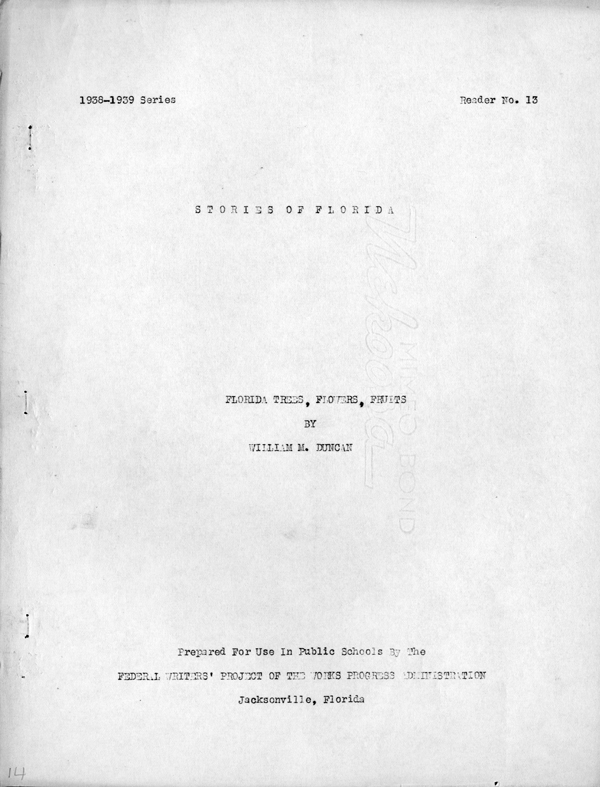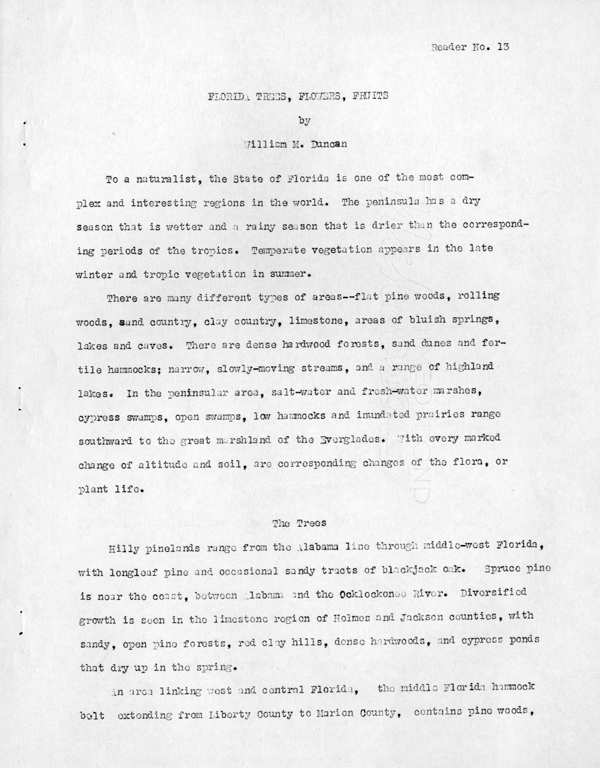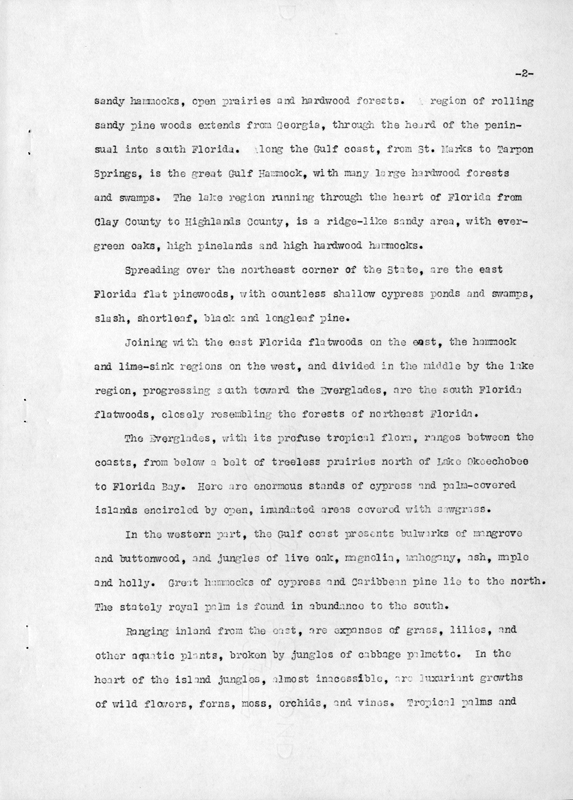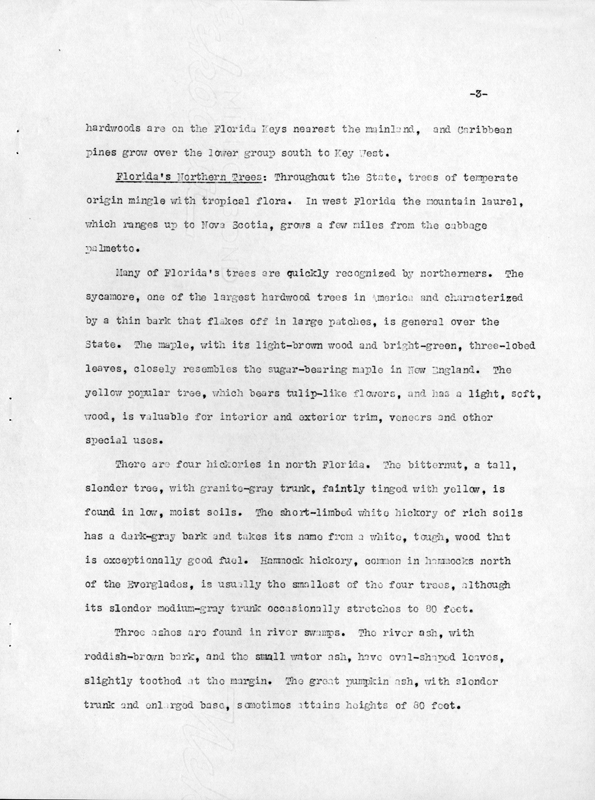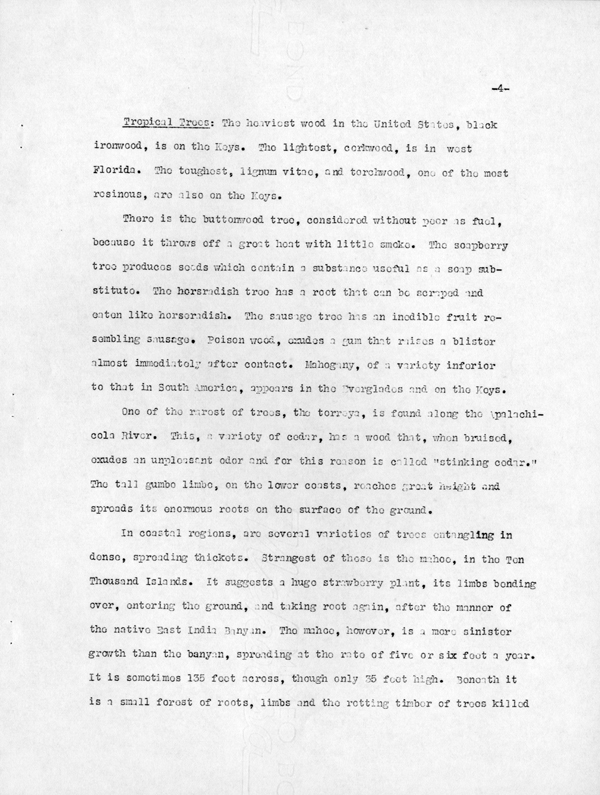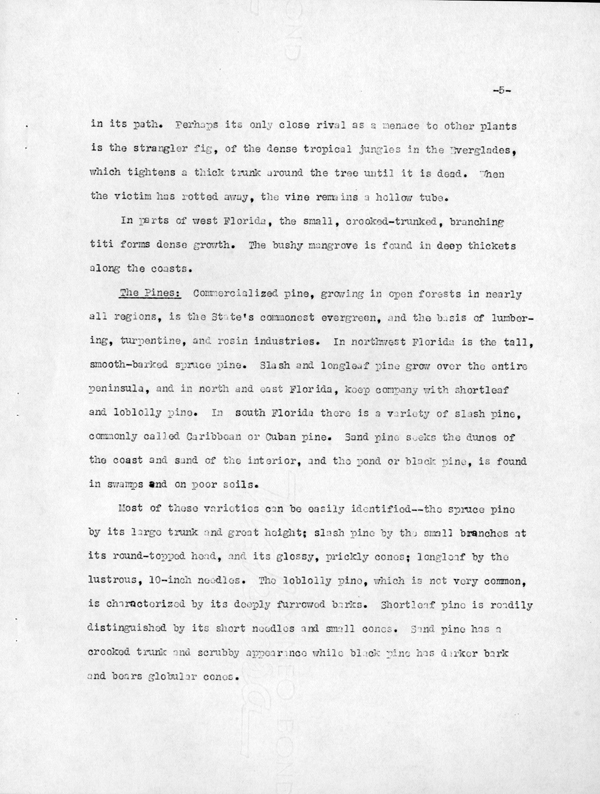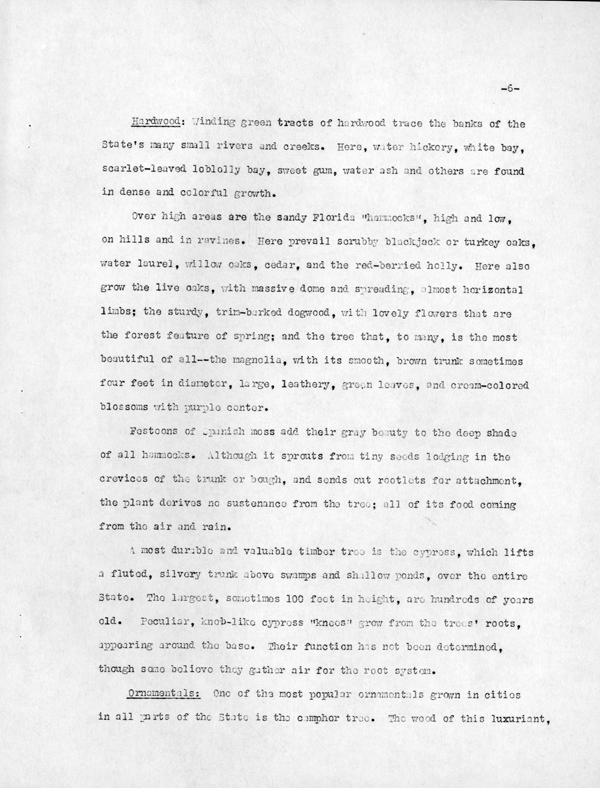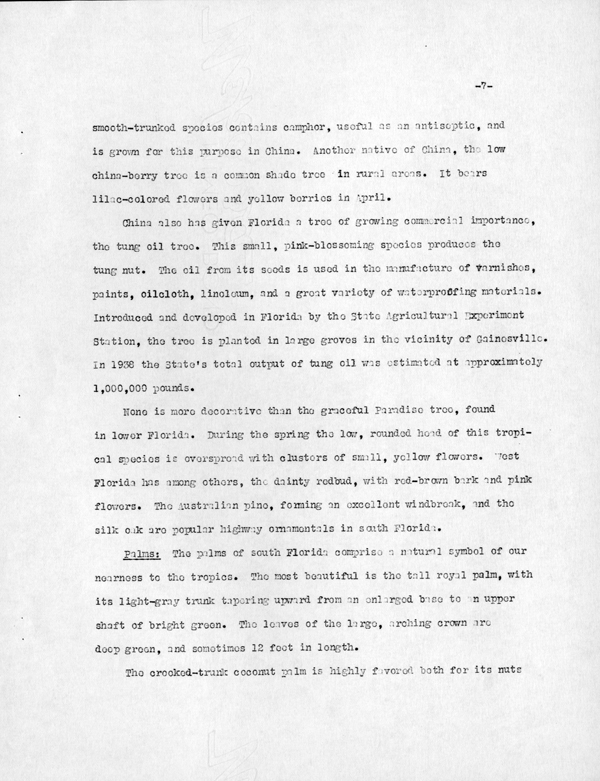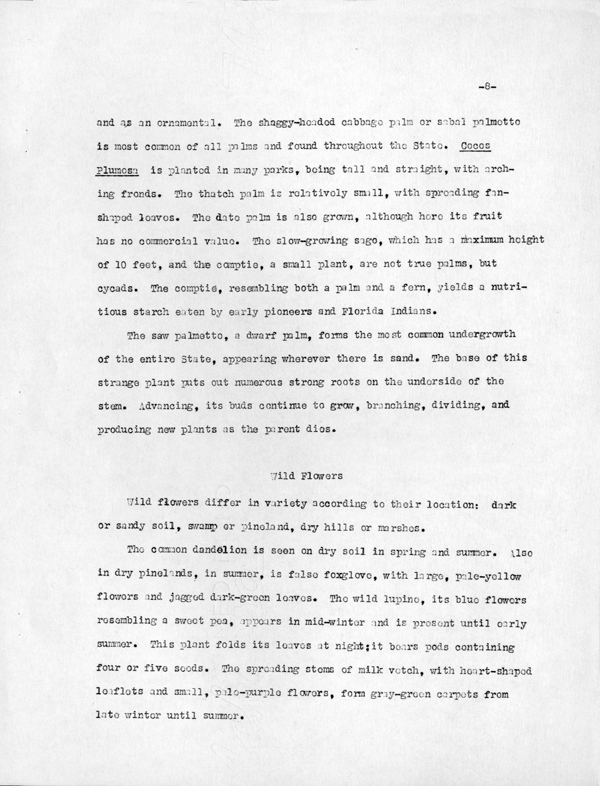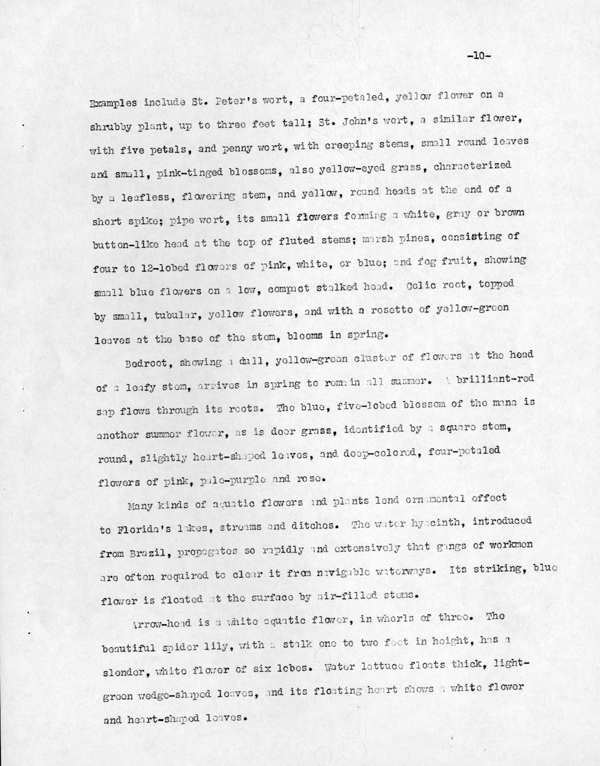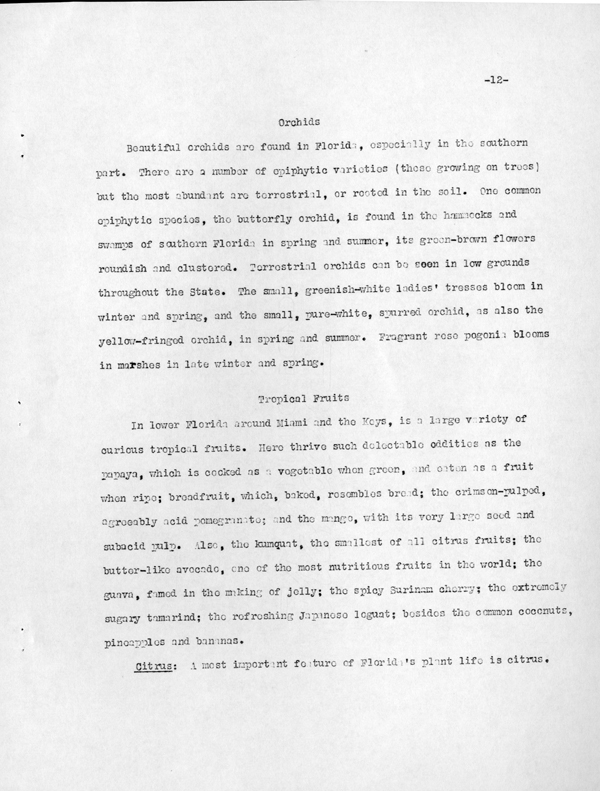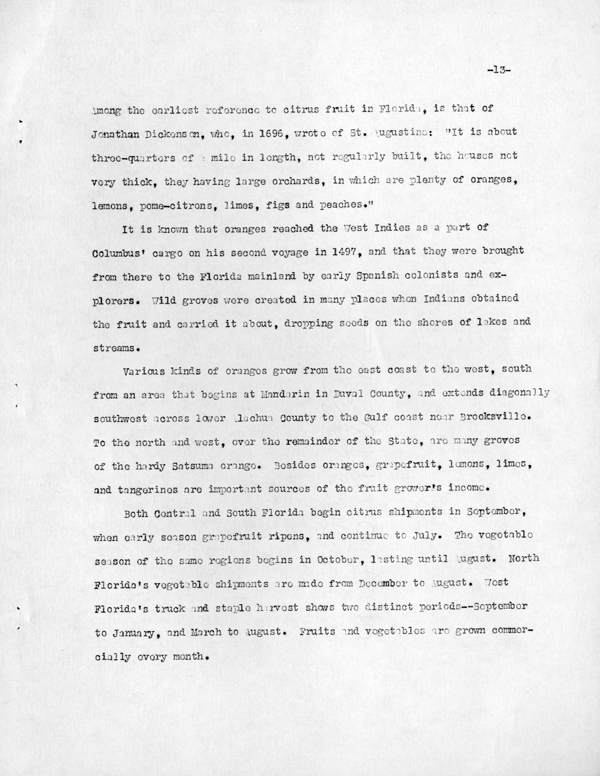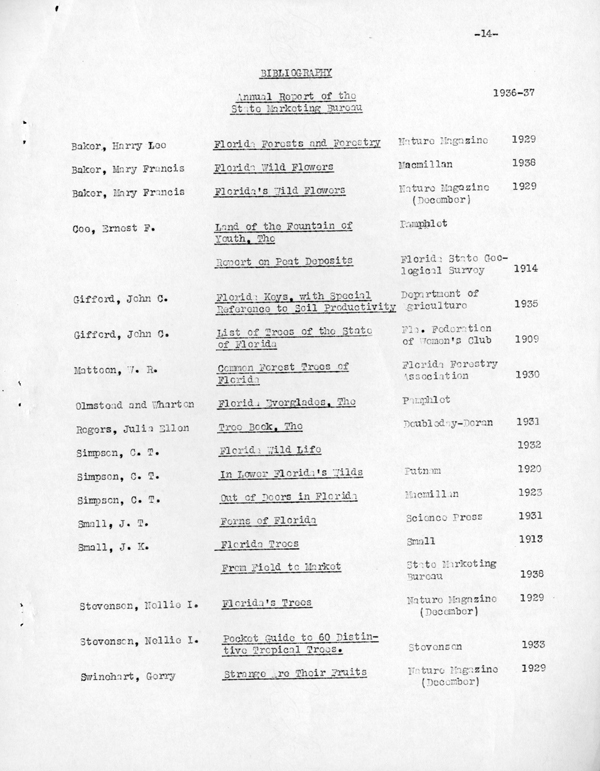Florida Memory is administered by the Florida Department of State, Division of Library and Information Services, Bureau of Archives and Records Management. The digitized records on Florida Memory come from the collections of the State Archives of Florida and the special collections of the State Library of Florida.

State Archives of Florida
- ArchivesFlorida.com
- State Archives Online Catalog
- ArchivesFlorida.com
- ArchivesFlorida.com
State Library of Florida
Related Sites
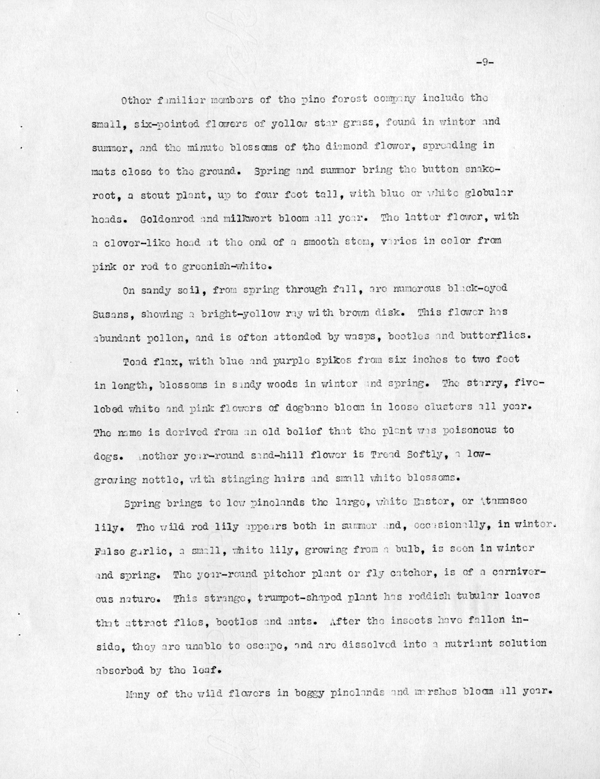
Description of previous item
Description of next item

Title
Published Date
[page 9]
Other familiar members of the pine forest company include the small, six-pointed flowers
of yellow star grass, found in winter and summer, and the minute blossoms of the diamond
flower, spreading in mats close to the ground. Spring and summer bring the button snake-root, a
stout plant, up to four feet tall, with blue or white globular heads. Goldenrod and milkwort
bloom all year. The latter flower, with a clover-like head at the end of a smooth stem, varies in
color from pink or red to greenish-white.
On sandy soil, from spring through fall, are numerous black-eyed Susans, showing a
bright-yellow ray with brown disk. This flower has abundant pollen, and is often attended by
wasps, beetles and butterflies.
Toad flax, with blue and purple spikes from six inches to two feet in length, blossoms in
sandy woods in winter and spring. The starry, five-lobed white and pink flowers of dogbane
bloom in loose clusters all year. The name is derived from an old belief that the plant was
poisonous to dogs. Another year-round sand-hill flower is Trend Softly, a low-growing nettle,
with stinging hairs and small white blossoms.
Spring brings to low pinelands the large, white Easter, or Atamasco lily. The wild red lily
appears both in summer and, occasionally, in winter. False garlic, a small, white lily, growing
from a bulb, is seen in winter and spring. The year-round pitcher plant or fly catcher, is of a
carnivorous nature. This strange, trumpet-shaped plant has reddish tubular leaves that attract
flies, beetles and ants. After the insects have fallen inside, they are unable to escape, and are
dissolved into a nutrient solution absorbed by the leaf.
Many of the wild flowers in boggy pinelands and marshes bloom all year.
Title
Subject
Description
Creator
Source
Date
Contributor
Format
Language
Type
Identifier
Published Date
Image URL
Thumbnail
Transcript Path
Image Path
Image Path - Large
Chicago Manual of Style
Duncan, William M. Florida Trees, Flowers, Fruits. 1938. State Archives of Florida, Florida Memory. <https://www.floridamemory.com/items/show/181519>, accessed 26 December 2025.
MLA
Duncan, William M. Florida Trees, Flowers, Fruits. 1938. State Archives of Florida, Florida Memory. Accessed 26 Dec. 2025.<https://www.floridamemory.com/items/show/181519>
AP Style Photo Citation
(State Archives of Florida/Duncan)

 Listen: The Blues Program
Listen: The Blues Program